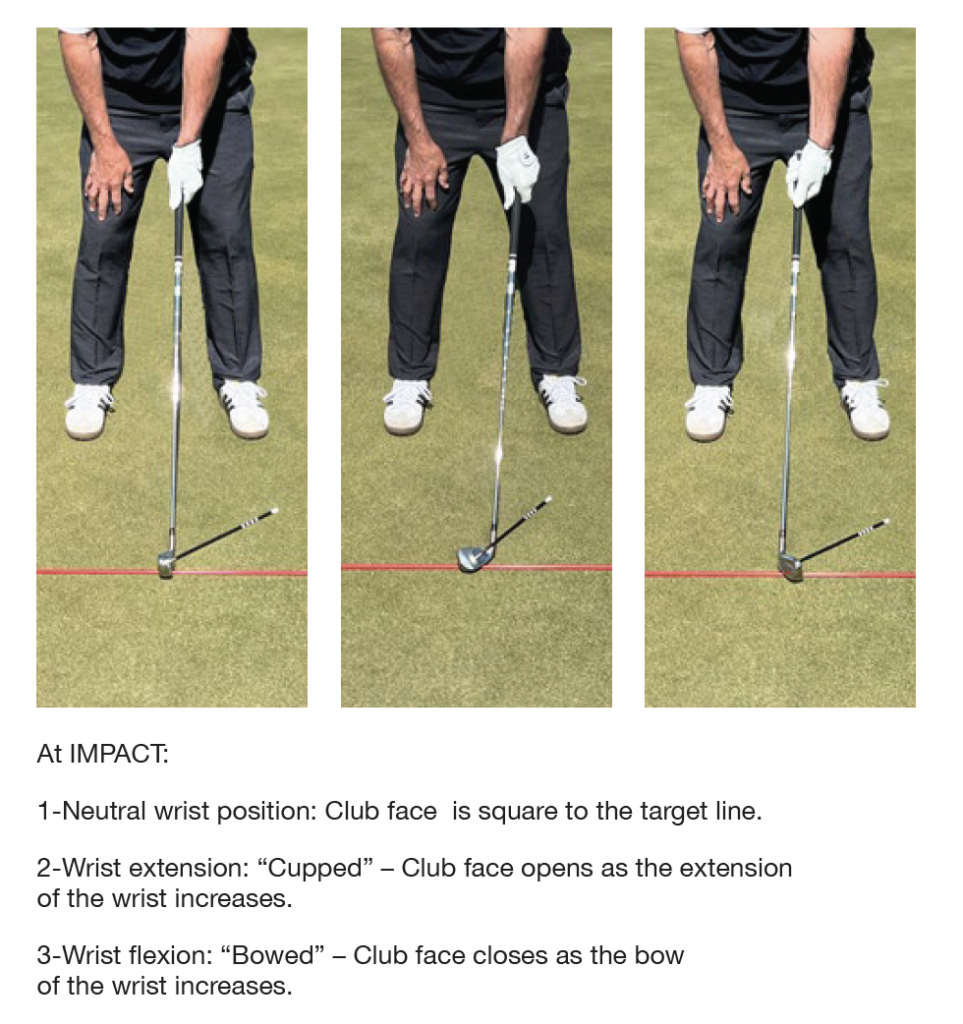A square clubface at impact is essential for consistent golf shots – and your grip plays a direct role in making that happen. Whether you’re a beginner or experienced player, your grip influences whether the clubface is square, open or closed at impact. Each individual’s grip interacts with their own personal swing. Thus, understanding how your grip relates to your swing motion is the key to learning how you need to hold the club.
When placed properly, the top hand (left hand for right-handed golfers) controls the clubface throughout the swing. Hockey players will relate: when stickhandling, the top hand controls the blade, constantly opening and closing it to corral the puck. The same is true in golf – the top hand controls the face.
When you properly hold the club, your hands should act like clamps and the wrists should not have forced movement. The top hand wrist changes the clubface angle by flexing and extending it. Therefore you should have minimal extension or flexion of the top hand wrist during the swing. When you actively move this during the swing you are misguiding the clubface, causing a change in clubface alignment and also affecting the depth of your swing if this is at impact. This is why we try to putt and chip with wrist movement (this may be the best tip in the article).
Thus, a square clubface throughout the swing and at impact is a product of how your grip and wrist action interact with your swing.

The bottom hand (right hand for right-handers) can introduce complications. It’s often the dominant hand, and when it’s too active or incorrectly placed, it can override the top hand and misalign the face at impact – causing extension of the top hand, causing flipping or pushing the club at the ball. This causes topped shots for intermediate golfers, and lower handicap players will see inconsistent distances and find it hard to dial-in the precision they need at their level.
Golfers will have subtle differences in their grip and wrist action because they have different swings. A PGA teaching pro can help you understand how your grip relates to your swing, how your wrist mechanics affect face control, and how to build a grip and/or a swing motion that works for you – not against it.
Remember: it’s your swing. Tour professionals refined their grip with their swing through years of experience. Your grip and swing must evolve together. There is no one-size-fits-all approach. Understand your own mechanics and you’ll build a swing that’s both functional and repeatable.
WARNING: Modifying your grip will take patience and effort, but the rewards are outstanding!
Visit mckenziemeadows.com/academy/golf-tips for more info.






